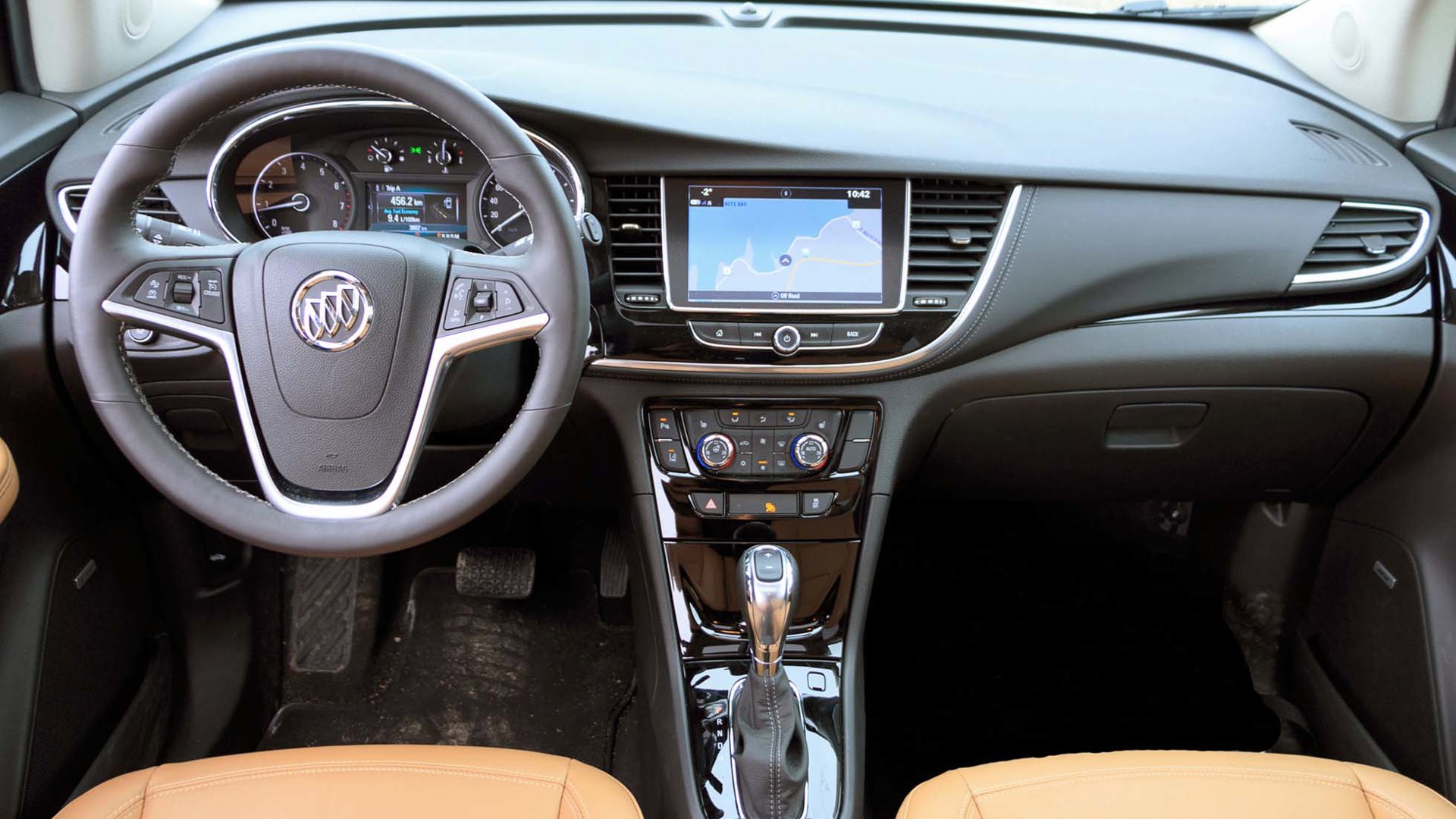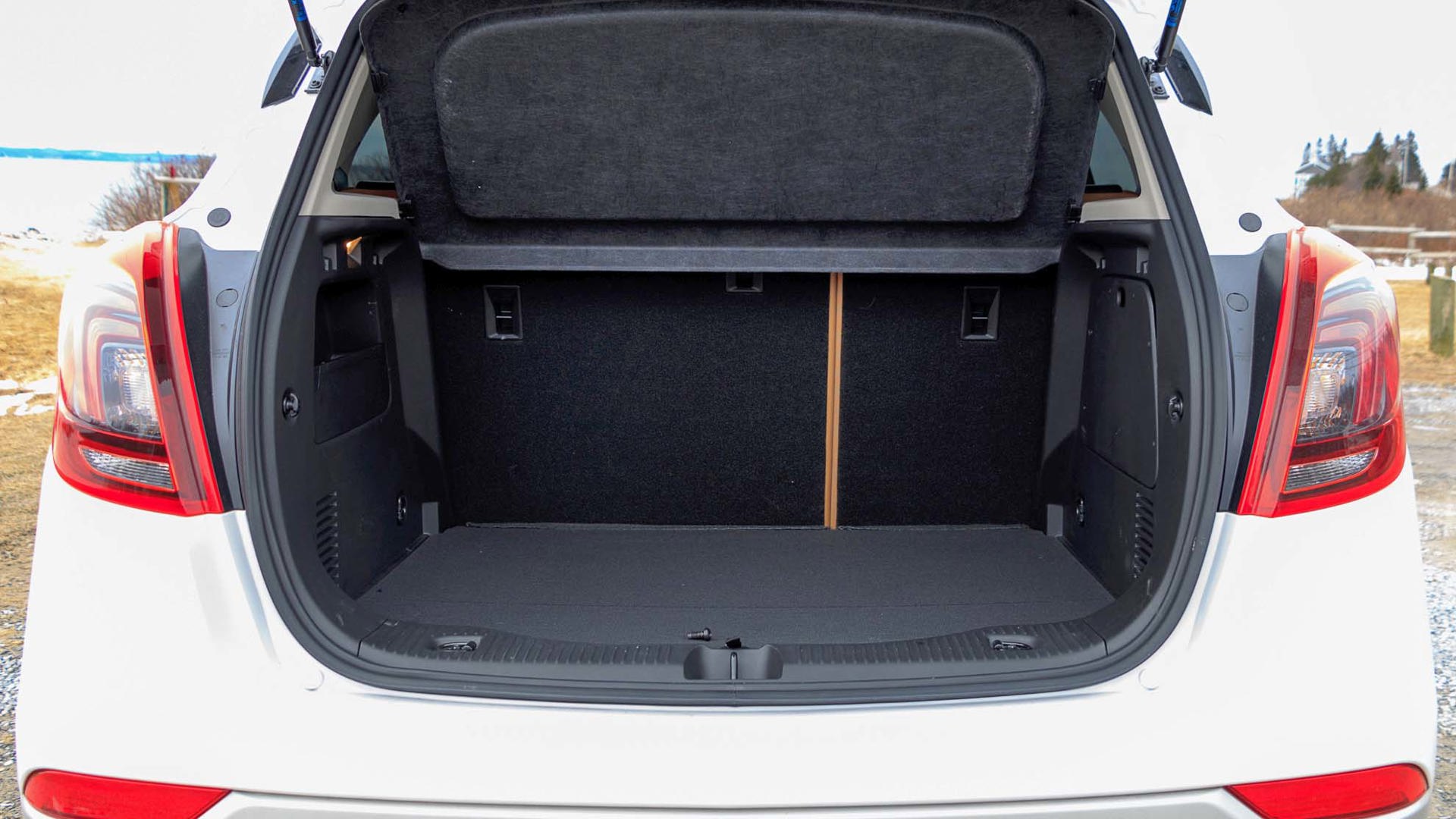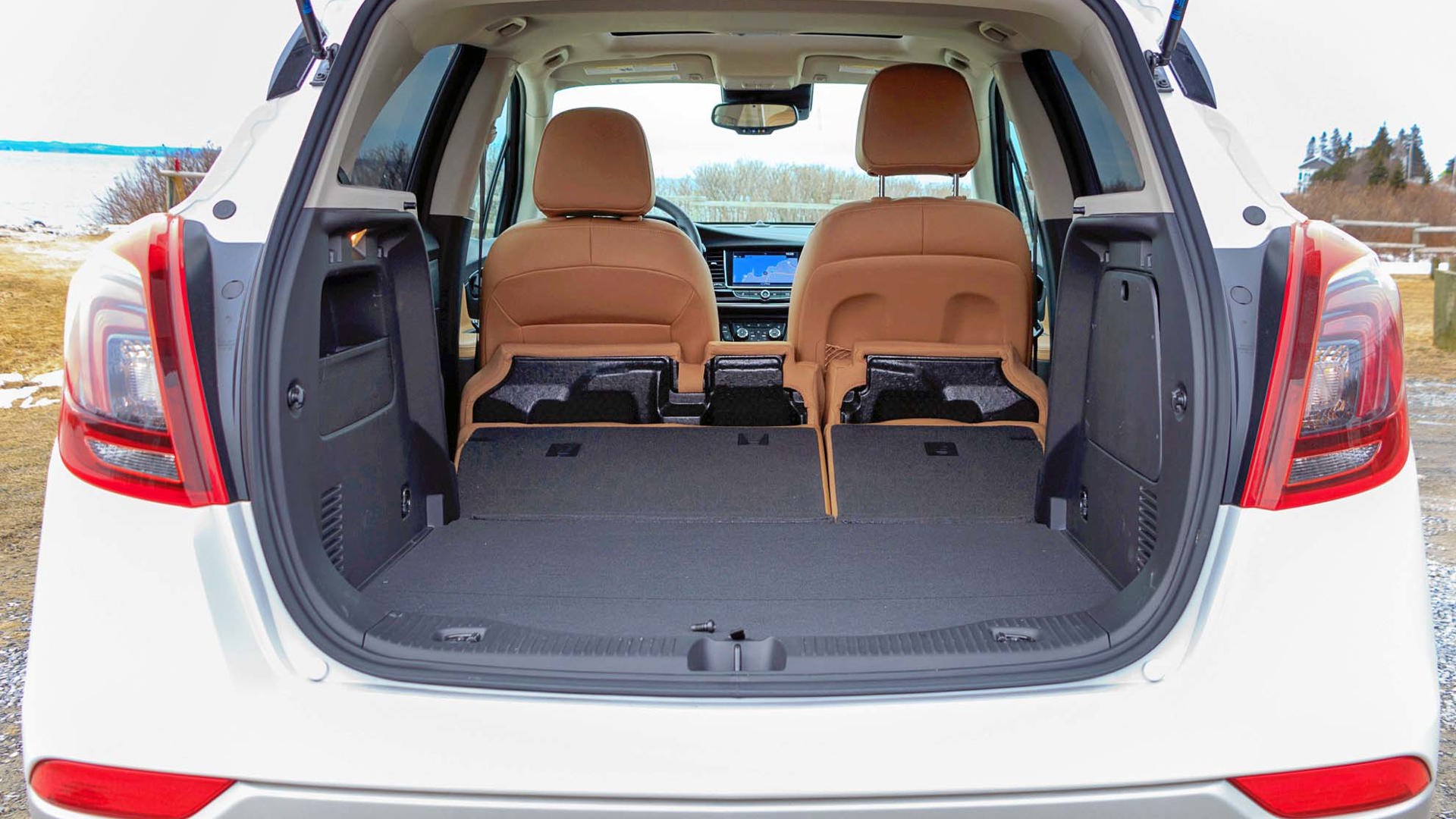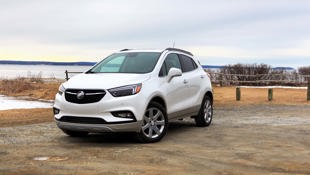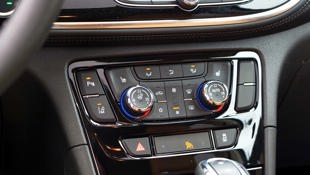 AutoTrader SCORE
AutoTrader SCORE
-
STYLING7/10
-
Safety7/10
-
PRACTICALITY7/10
-
USER-FRIENDLINESS8/10
-
FEATURES7/10
-
POWER7/10
-
COMFORT7/10
-
DRIVING FEEL7/10
-
FUEL ECONOMY7/10
-
VALUE8/10
When Buick launched the Encore all the way back in 2013, it wasn’t just one of the first premium subcompact SUVs, it was one of the first of a new breed of subcompact crossovers. Back then if you wanted something tiny but high-riding there was a Nissan Juke, and that was about it. Now it’s one of the hottest segments around. At the luxury end of it, Audi has the Q3, Infiniti has the QX30, and Mercedes-Benz has the GLA. At the lower end sit the Mazda CX-3, Honda HR-V, and Jeep Renegade. But despite all those extras, Buick still has a unique spot as the only one that’s in the middle. Nicer than the lower models, but cheaper than an Infiniti or Audi.
Are some small changes enough to keep this subcompact CUV premium behind the wheel?
Even though Buick holds that middle ground largely uncontested, just being there isn’t enough. Cars, especially fashionable ones like the Encore, don’t age well. If it’s not getting an update it gets stale. If it’s stale, the sales fall off shockingly quickly. Just ask Fiat; sales of its fashionable 500 coupe dropped from a high of 8,474 in 2012, the car’s first full year, to just 1,028 last year. Ouch.
With that in mind, Buick refreshed the Encore for 2017 – not a new model, just some new front sheet metal and some interior touches. But are some small changes enough to keep this subcompact CUV premium behind the wheel?
The biggest change to the styling is a big reduction in bare plastic cladding. There’s still some cladding along the bottom, but it no longer looks like a mini off-roader. If you get white frost metallic paint, like my test car, the cladding is even painted. The grille is also new and its smaller size, combined with a narrower spacing of the thin vertical slats, makes for a much classier look. The Buick shields are now back to red, white and blue, from the plasti-chrome of the last few years, and it’s a big improvement.
Inside, the 2017 Buick Encore gets an all-new dashboard and centre stack. It’s a much more modern design, and it looks and feels miles improved over the old one. Gone is the microwave-style information display and tacked-on screen; now there’s a full-colour display, piano-black trim, and a nicely integrated 8.0-inch screen with Buick’s IntelliLink infotainment system. There is only one big interior carryover from last year. Unfortunately, it’s the thing you’ll see first every time you get in. The steering wheel is still GM’s previous-generation corporate wheel. It’s been around for far too long at this point, and it is time for a change.
While the leather covering of the steering wheel feels surprisingly good, the rest of the wheel, along with the flimsy and clunky rocker switches, does not feel good. GM has some much better steering wheels in the parts bin, like the one from the Cruze or the one found in the Regal, and moving to either of those would be a big improvement and a step toward making the interior more cohesive. Dropping the stalk-mounted controls for the information display in favour of steering-wheel-mounted controls would help out the ergonomics and ease of use of those controls too.
Buick lets you add some colour to the inside of the Encore in a way that has become very rare over the last decade or two. The default choice is black seats and door trims in cloth on lower trims or in leather on higher trims like my Encore Premium test car, but Buick gives you choices. If you choose cloth, then there is also a slate grey trim and seat option. Move up to leather and you can have the grey, but you can also get what Buick calls brandy, but what the rest of us would call light brown. It’s a very bright brown, and it helps lighten up the cabin quite a bit. The other thing it does is bring attention to the top of the very large dashboard.
You sit very high up in the Encore, even with the seat all the way down. It gives you great views out the large windshield, but it also means that you are looking down on a very expansive dashboard. It’s not the massive dash of a late ’90s GM dustbuster van, but it’s not far off. The top of it is a soft plastic, and the finish does an excellent job of not reflecting back at you in the glass, but it really doesn’t look appealing. Especially for something you see so much of. Some extra leather trim or a different grain of plastic would go a long way.
That high-up seating position is what really helps separate the Encore from the rest of the subcompact CUV group. The Infiniti QX30 is so small inside that it can be difficult or uncomfortable to drive for anyone average sized or bigger. Sure it has an available surround view camera that the Encore lacks, but you still can’t reverse it if you can’t see what’s around you. Sit in an Audi Q3 and it isn’t much better. The Encore doesn’t need surround view. It’s very tall inside, and there is excellent visibility all around, so you can see what’s going on around your car. A look at the spec sheets shows the Encore as having less space than the others inside, but it’s one of those times where the numbers aren’t everything. The Encore feels much larger inside, both for the driver and for backseat passengers.
You can get an Encore with front-wheel drive in all but the top trim and all-wheel drive is available on all but the bottom trim. All-wheel drive is standard on the top-level Encore Premium, which is the trim my test car came in. There is one transmission available, and it’s a smooth and quick-shifting six-speed automatic. A six-speed doesn’t offer the on-paper fuel-economy benefits of a CVT or an automatic with more gears, but it offers a much better driving experience than a CVT and is easier to program than the eight- and nine-speed autos found in some of the competition. It does the job, and it does it well.
There is a choice of two engines in the Encore, both of them 1.4L turbocharged four-cylinders. The base engine makes 138 hp and 148 lb-ft of torque, but for a $1,030 upgrade, you can boost that to 153 hp and 177 lb-ft. Even though both are 1.4L turbocharged engines, the more powerful of the two is a different engine and is a newer design that has direct injection. Not only does it make more power, it returns better fuel economy. The engine upgrade is available on front-drive Essence trim models, and Sport Touring, Essence and Premium all-wheel-drive models. The 138 hp engine in my test car felt adequate, even in highway passing, but more power is almost always better. When it is accompanied by a 0.5 L/100 km boost in combined fuel economy, then more power is an easy choice.
The Encore doesn’t have lane-keep assist or radar cruise control. What it does have are some features that are a unique-to-GM, cheaper version of the same thing. The Encore can tell if you are following the car in front too closely. If it thinks you are, and you can adjust the sensitivity, a small green light in the dash turns orange and the car gives you a beep. Sure it will tell you you’re too close, but the icon is small, and the beep is used for several other notifications. Instead of slowing for the car in front, you’ll be staring at your dashboard trying to figure out what’s going on.
If it detects an impending collision you’ll get a red light projected in the front windshield, but the following distance notification isn’t much help. The same goes for the lane-departure warning. One beep and a small orange symbol at the bottom of the dash. By the time you figure out what the warning is, you’ll already be in the ditch.
Suspension tuning in the Encore is soft, as you would expect for a Buick. Throw it into a turn and it will roll heavily before understeering. But if you are driving at a less aggressive pace, it handles itself surprisingly well. It’s far from a sports SUV, but it turns in more eagerly than you would expect from a Buick. The ride is busy and it seems to react to every bump, rather than just absorbing them, but it’s always comfortable.
It seems like Buick engineers wanted to put some sporting feel into the Encore, and they’ve managed to do that. It responds eagerly to do what you want it to, much like the Sonic it shares a platform with. After the numbness of Buicks of old, the ride and handling is a pleasant surprise. Will it deliver the feedback of a BMW X1, or the fun-to-drive factor of the Infiniti QX30? No, but that doesn’t make it any less enjoyable to spend time behind the wheel.
The Buick Encore feels like the biggest of the premium subcompact CUV class, and even though it’s not the biggest on paper, the feeling that it is, is still its strongest feature. It lacks some of the premium or luxury feel of the competition, but that’s little surprise when it starts at $23,195. Even the $37,280 of my almost fully loaded test car is just a few thousand more than a base front-drive QX or Q3, and at that price, it feels like a bargain. If you’re looking for a premium CUV, then the Encore may surprise you. Buick hopes that it won’t just surprise you, but that you’ll be looking for a repeat performance.
| Engine Displacement | 1.4L |
|---|---|
| Engine Cylinders | 4 |
| Peak Horsepower | 138 hp @ 4,900 rpm |
| Peak Torque | 148 lb-ft @ 1,850 rpm |
| Fuel Economy | 9.8/7.7/8.8 L/100 km city/hwy/cmb |
| Cargo Space | 532 L/1,371 L seats folded |
| Model Tested | 2017 Buick Encore AWD Premium |
| Base Price | $34,195 |
| A/C Tax | $100 |
| Destination Fee | $1,700 |
| Price as Tested | $38,980 |
|
Optional Equipment
$2,985 – White Frost Tricoat $1,195; Experience Buick Package $2,890 ($1,790 with $1,100 rebate)
|
|



